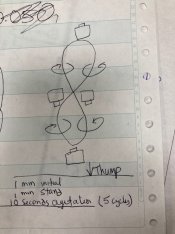I haven't used them enough to really form a reliable preference.I wonder, Matt: do you prefer any of those two films for some precise tasks? I find them very different films, tonally speaking...
And by the way, I do work on films a lot, instead of considering the choice of film defines tone... You needed to imagine me, as someone I'm not, and that's interesting, for you to think, I mean...
And I never really thought that you were a person who believed that the choice of film alone defined tone - my comments were directed more at those who expect to find the solution for most problems by just switching films.
I do a fair amount of split tone printing to adjust shadow, mid-tone and highlight rendition. So it is in that stage of the process that I go when I'm trying to solve any problems.





